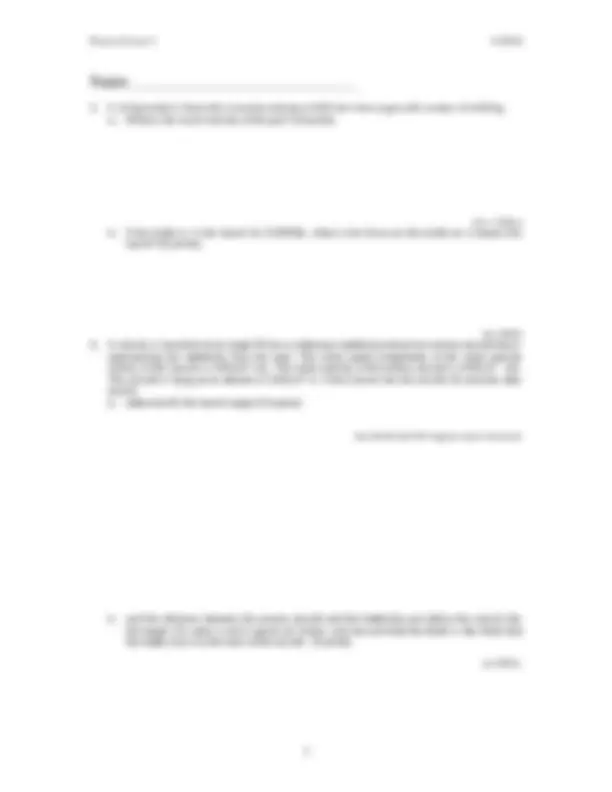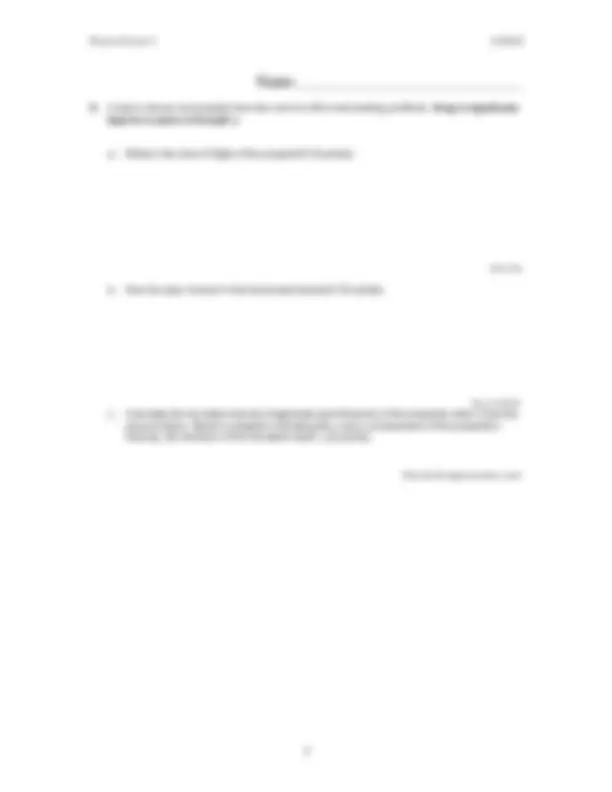




Study with the several resources on Docsity

Earn points by helping other students or get them with a premium plan


Prepare for your exams
Study with the several resources on Docsity

Earn points to download
Earn points by helping other students or get them with a premium plan
Community
Ask the community for help and clear up your study doubts
Discover the best universities in your country according to Docsity users
Free resources
Download our free guides on studying techniques, anxiety management strategies, and thesis advice from Docsity tutors
Material Type: Exam; Class: Foundations of College Physics; Subject: Physics; University: Sierra College; Term: Spring 2000;
Typology: Exams
1 / 4

This page cannot be seen from the preview
Don't miss anything!



Conversion Factors: 1 mile= 5280 feet (exact) 1 day= 24 hours (exact) 1 km =0.6214 miles 1 year=365.25 days 1 mile= 1609.3 m 1 atm=14.7psi=1.013x10^5 Pa=1.013x10^5 N/m^2 1 m=39.37 inches 1 cm= 10 mm (exact) 1kg=0.001g
PROBLEM 1 (16 points) PROBLEM 2 (26 points) PROBLEM 3 (14 points) PROBLEM 4 (20 points) PROBLEM 5 (24 points) TOTAL (100 max)
Name:_____________________________________________
1. A soccer ball is kicked at ground level with a speed of 57.0 ft/s at an angle of 43.0º above the horizontal. A player on the other team catches it just before it hits the ground. Keep 3 significant figures in parts a through d. a. How far does it go before landing (6 points)? Ans 101ft b. What are the initial horizontal (vox) and vertical (voy) components of the football’s velocity? (8 points) Ans 41.7ft/s Ans 38.9ft/s c. Is there another angle in which the ball can be kicked that will yield the same range? If so state the angle? (2 points) Ans 47.0 degrees
Name:_____________________________________________
5. A ball is thrown horizontally from the roof of a 56-m tall building at 45m/s. Keep 2 significant figures in parts a through c. a. What is the time of flight of the projectile? (5 points) Ans 3.4s b. How far does it travel in the horizontal direction? (5 points) Ans 1.5x10^2 m c. Calculate the resultant velocity (magnitude and direction) of the projectile when it hits the ground below. Sketch a diagram indicating the x and y-components of the projectile’s velocity, the direction of the resultant vector. (14 points) 56m/s@ 36 degrees below x-axis